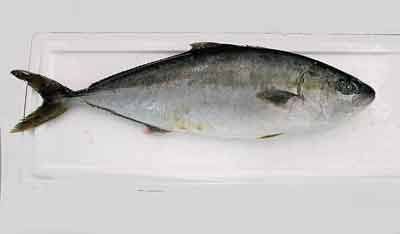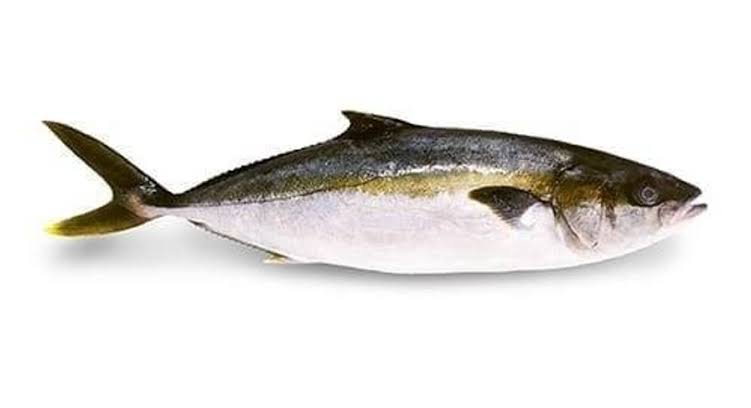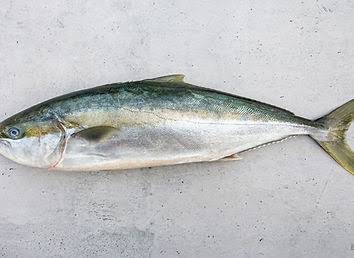- Origin and Background
- Characteristics of Hiramasa
- Culinary Uses
- Health Benefits of Hiramasa
- Sustainability and Fishing Practices
- Purchasing and Storing Hiramasa
- Tips for Cooking Hiramasa
- Hiramasa in Japanese Cuisine
- Hiramasa vs. Yellowtail
- Hiramasa in Fine Dining
- Hiramasa in the Culinary World
- Conclusion
- FAQ’s
The delicate flavor and versatility of hiramasa, also called yellowtail amberjack, make it a highly sought-after fish. Learn about hiramasa’s history, personality traits, culinary applications, health advantages, sustainability, and more in this in-depth essay.
Origin and Background

The pure, cool ocean waters of Southern Australia and New Zealand are the birthplace of the hiramasa. Because of its unique flavor and texture, it has become famous all across the globe.
Characteristics of Hiramasa
Appearance: The sleek, torpedo-shaped body and brilliant silver skin are the defining features of Hiramasa’s appearance. There is moderate fat marbling throughout the flesh, and the texture is firm.
Flavor Profile: Hiramasa has a gentle, slightly sweet flavor that is finished off with a clean palate. Seafood lovers love it for its creamy, buttery flavor.
Nutritional Value: Hiramasa is a wonderful food source of protein, omega-3 fatty acids, minerals, and vitamins, making it a nutritional powerhouse. The vital nutrients it contains are good for your health and well-being in general.
Culinary Uses

The adaptability of hiramasa makes it a highly sought-after ingredient. Grilling, baking, frying, and sashimi are just a few ways to prepare it. Because of its sturdy texture, it can withstand a variety of cooking methods, making it ideal for both basic and complex meals.
Famous Dishes: Grilled hiramasa with a citrus glaze, ceviche, tacos, and teriyaki are among the most famous hiramasa dishes. Its subtle flavor allows for endless culinary possibilities because it goes well with so many different foods.
Health Benefits of Hiramasa
Omega-3 Fatty Acids: Essential for cardiovascular health, cognitive function, and inflammation reduction, omega-3 fatty acids are abundant in hiramasa. Incorporating hiramasa into your diet on a regular basis will help you maintain a healthy heart.
Protein Content : Hiramasa is a great option because of its high protein content. Building and maintaining muscles, as well as the body as a whole, rely on protein.
Mineral and Vitamin Content: Hiramasa is a great source of potassium, selenium, vitamin D, and vitamin B12. Immune system support, bone health, and electrolyte balance are just a few of the many vital biological activities that these nutrients are essential for.
Sustainability and Fishing Practices

To protect marine ecosystems and fish populations for the future, hiramasa is fished in a responsible and sustainable manner. To avoid overfishing and reduce environmental damage, fisheries follow stringent rules and restrictions.
Purchasing and Storing Hiramasa
Try to get hiramasa that is fresh, has bright eyes, and is firm when you buy it. Keep it in the fridge’s coldest spot and eat it within a day or two for the best flavor and freshness.
Tips for Cooking Hiramasa
Season hiramasa with salt and pepper sparingly to bring out its natural tastes for the finest outcomes. Hiramasa is best eaten when it is still slightly underdone and moist, so be careful not to cook it for too long.
Hiramasa in Japanese Cuisine
Hiramasa is a highly esteemed ingredient in Japanese cuisine, particularly in sashimi and sushi. True sushi connoisseurs love it for its melt-in-your-mouth texture and mild flavor.
Hiramasa vs. Yellowtail
Although both hiramasa and the more conventional yellowtail are used interchangeably, they actually belong to distinct species. Hiramasa is unlike any other fish you’ve ever had before because it’s firmer and has a milder flavor than yellowtail.
Hiramasa in Fine Dining
The globe over, hiramasa is served in the finest restaurants thanks to its renown for gastronomic excellence. Hiramasa is prepared in creative ways by chefs to showcase its inherent flavors and adaptability.
Hiramasa in the Culinary World
All things considered, hiramasa’s nutritious value, culinary diversity, and exquisite flavor keep it in the spotlight of the culinary world. Hiramasa provides a gourmet dining experience that is both aesthetically pleasing and nutritionally sound, whether cooked to perfection or eaten raw.
Conclusion
Finally, the delicate flavor, nutritional value, and culinary variety of hiramasa make it a veritable pearl of the sea. Whether you eat it at a restaurant or make it at home, hiramasa is always a show-stopper thanks to its high-quality ingredients and gourmet appearance.
FAQ’s
Q: Is hiramasa high in mercury?
Regular consumption of hiramasa is considered safe because it has relatively little mercury compared to other fish species.
Q: Can I freeze hiramasa?
Although it’s better to eat hiramasa as soon as it’s made, it can be frozen for up to three months. Wrap items correctly to avoid freezer burn.
Q: What is the best way to cook hiramasa?
Grilling and pan-searing are two of the most common ways to cook hiramasa, as they both keep the texture and flavor intact.
Q: Where can I buy hiramasa?
In addition to online seafood vendors, you may find Hiramasa at several specialty grocery stores and seafood markets.
Q: What makes hiramasa different from regular yellowtail?
Hiramasa is a one-of-a-kind gastronomic delight, thanks to its softer flavor and firmer texture compared to regular yellowtail.




